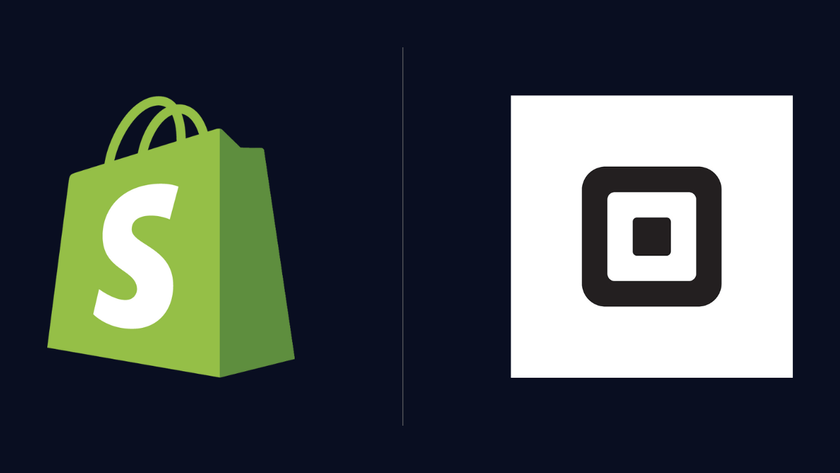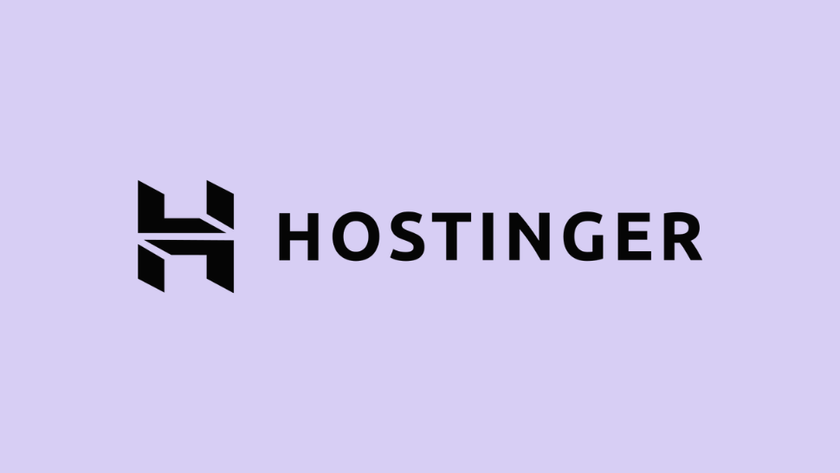How to start an online store from scratch and drive sales
Launching an ecommerce business has never been easier

One of the greatest talents that you can have as a business owner is knowing how to start an online store the right way.
Why? Well, it has never been easier to launch an eCommerce business. Anyone can start an online store, but not everyone can make it into a success.
Fortunately for you, all the tips and tricks you’ll need to know when starting an online store are here in this article.
Curious entrepreneurs and ambitious business owners – right this way.
- These are the best web hosting services for your website
Benefits of starting an online store
If you want to create an online store, remember that whatever products you sell, the business will require two things from you: time and energy.
Pouring effort into your eCommerce website will pay off, though. Here are just some of the many advantages to starting an online store:
- Flexibility - You can easily test new products, play with features, and switch up your working hours when you run an online store.
- Low overheads - Depending on the business model, eCommerce stores often present cost-saving opportunities to businesses.
- Additional revenue stream - Already have a website or online business? Selling products is a cool way to diversify your brand.
- Growth potential - Turn a side hustle into a main business, expand your product range, or open physical retail locations – it’s all possible.
- Global audience - Online stores enable businesses to sell to people all over the world, not just people in their hometown.
- Marketing opportunities - Your eCommerce platform will become central to your brand’s online marketing strategy.
Ready to start building your business and finding your customers? Here’s how to start an online store from scratch, step by step.
Are you a pro? Subscribe to our newsletter
Sign up to the TechRadar Pro newsletter to get all the top news, opinion, features and guidance your business needs to succeed!

1. Choose your niche
The first step you’ll need to take towards launching an eCommerce store is finding what will make your business stand out from the competition.
From products to customers and fulfillment, you should begin the journey by thinking about every step along the way. Sounds intense, but it’ll be worth it.
Products
The best way to start an online store is with a niche product (or range of products) that you feel passionate about. To find those perfect products:
- Research keywords - Use a site like JungleScout, check out Google AdWords, or scroll through social media platforms to uncover trending products.
- Max out social media - Go deeper and read Pinterest’s trend report or Reddit’s product review boards, and flick through Instagram Shop’s curated items.
- Realize a passion - Sometimes, self-reflection can help find a winning business idea. Is there a product category that you love, or want to improve?
Think the stars have aligned and you’ve found products for your online store? The next steps are as important – it’s time to validate demand.
Make sure to:
- Check out the competition - You’ll want to start an online store with products that are in demand, but unique enough price- or style-wise to earn you money.
- Check demand - Revisit trend reports and social media, survey your target audience, and even ask your friends if they’d buy your products.
- Check quality - Can you get a hold of well-made items for your eCommerce store? Don’t start your business with poor quality products.
Customers
Finding the right products and the right customers is a balancing act – these steps usually overlap. Here’s how you can land the ideal target audience:
- Create a buyer persona - What does someone who shops in your online store look, sound, and live like? Imagining your target customers is a solid strategy.
- Identify a problem that your product solves - One of the best ways to start an online store is by knowing how you’ll improve the lives of your customers.
- Use your existing target audience - Are you scaling a small business with your online store? Consider the customers you already have.
Business model
With your products and a target market in mind, think about what kind of business structure you’d like. Online stores typically use a few distinct fulfillment models:
- In-house fulfillment - Popular with bigger eCommerce platforms and artisans, you store product inventory, arrange shipping, and manage returns yourself.
- Dropshipping - Your online store is like a shop window – you display the products. When someone places an order, you tell a wholesaler who fulfills and ships it.
- Subscription - This is a cool tactic to retain customers. They pay in advance for weekly, monthly, or quarterly deliveries of your products.

2. Write a business plan
The next step will help you transform your online store ideas into actions. It’s time to pull together your eCommerce business plan.
Writing a plan not only gives you a clearer view of the future of your store, but it’ll show other people what you’re doing. Here are some key tips.
Lead with a mission statement
This is the place to share the purpose of your online store. Even if you’re a small organization with very few products, it’ll help to give your eCommerce venture some direction:
- Describe your business - What product fulfillment model are you using? Which industry will your store fall into, for example fashion or homewares? This is a good opportunity to summarize your plans.
- State what you’ll sell - Share an overview of the products your online store is going to offer and what their key characteristics will be. Include details like product origins and price points.
Highlight your market research
You’ve already put in the work to uncover your ideal products and customers. As you grow your brand, make sure you have justified what makes your online store competitive:
- Define your target audience - Note down the demographic indicators of the people who you believe will buy your products. It might sound crazy, but you could even name your buyer persona to help you imagine who you’re serving.
- Identify your competitors - There will probably be other online stores selling similar products to similar customers. Your job will be to commit to having a unique website with standout service levels and product qualities.
Share your strategies
Any good article about how to start an online store will tell you that good marketing is key to your success. You should plan your approach before setting up your business with a comprehensive Marketing Plan. This should include:
- Your USP - draw on your market research here to find your Unique Selling Point. Whats sets your store apart from all the competition? What unique value do you offer to customers? Try to summarise this in one or two clear, persuasive sentences.
- Content plan - Content marketing is a powerful way to build trust with potential customers and cement your store’s reputation. Write a bulleted list of exactly how, where and when you’ll share content such as product announcements, blog entries, videos, social media posts, and email newsletters.
- SEO Optimization - How will you gather and use keywords to boost your store’s search engine rankings? Will this be done through maintaining your website regularly, updating with fresh content or some other way? Note that adding a blog (see below), is a great way to improve your store’s SEO.
- Social Media integration - Which platforms will you use? How will you maintain your store’s presence on social media?
- Advertising Plan - How much will you pay towards targeted ads? Will you use just Google or other social media sites?
- E-mail strategy - How will you collect customer e-mail addresses to send them e-mails about your store? How will you make sure these e-mails are tailored to their interests?
There’s plenty more that you can include in your company’s plan of action. Leave room for the practical stuff which is just as vital to the success of your online store, for example:
- Financial plans - Business expenses, budgets, and revenue targets are essential bits of information.
If you don’t feel comfortable with dealing with balance sheets, now is a very good time to find an accountant for your e-store. A good accountant can let you know about costs associated with establishing and running your store such as setting up bookkeeping systems, tax and preparing financial statements. They may also be able to suggest ways to manage your cash flow and/or save money.
- Planned milestones - Whether you measure success each year or every quarter, it’s cool to make note of your business goals and when you plan to reach them. Set your online store some realistic targets.
First and foremost you should list when you actually want your store to move from testing and go ‘live’.
You can also set milestones for events like your store reaching X number of visitors by a certain date, as well as your estimated conversion rate i.e. how many of them actually buy something.
Another important milestone is estimating your revenue at regular intervals. Your accountant can help you with this if you’re not sure where to start.
- Also check out the best business plan software
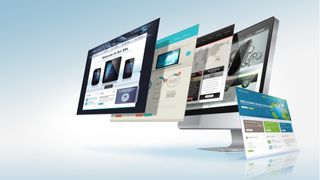
3. Select a website builder
If you want to know how to start an online store quickly, easily, and without spending thousands on developers, start looking at website builders.
Website builders simplify the site development process. Accessible to anyone, these platforms take care of hosting, design, and coding so that users can focus on growing a business.
You can launch your online business another way, but the benefit of a website builder is the tools you’re given to guide you through scaling your site or store.
From big platforms like Shopify to newer ones like Zyro, there are plenty of website builders to choose from. Here’s a quick breakdown of three of the best eCommerce site builders:
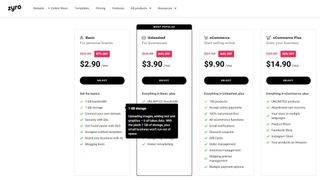
If you’re an entrepreneur and you have no coding experience, Zyro is a great choice. With a drag-and-drop editor and an impressive AI toolkit, designing a website is effortless:
- Pros - Every site gets a free SSL certificate, is mobile optimized, and SEO-friendly right away. Zyro gives online store owners inventory and sales tax management tools, multiple payment options and it’s 100% commission-free.
- Cons - Zyro is new to the eCommerce store builder world, so features aren’t as varied yet as some of its competitors, which pros might find limiting.
- Prices - Zyro’s eCommerce plan is $27.50 per month or for unlimited products, it’s $29.50 per month. Instead of a free trial, there’s a 30-day money-back guarantee, so you can still try it out risk-free.
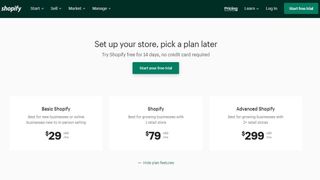
Shopify is a well-known store builder platform for users with a bigger budget or people with some coding experience. That said, Shopify is easy to use for building a store:
- Pros - Shopify offers a beginner guide to its site creation tools, is feature-rich, and ensures mobile-optimized site functionality. It’s easy to add things like video or zoom functions to product pages, and SSL is included.
- Cons - Whereas all Zyro templates are free, only a handful of the Shopify templates are. The platform also charges transaction fees.
- Prices - Shopify has a basic plan for $29 per month, although big business customers can pay $299 per month for Advanced Shopify. There’s a free trial for new users.
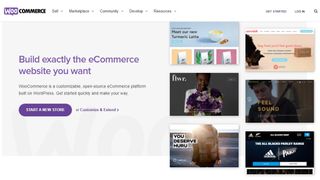
A WordPress-powered online store platform, WooCommerce is ideal for more experienced users with ambitious plans. Here’s an overview of what this store builder has to offer:
- Pros - Packed with advanced features and just as powerful as a platform like Shopify, WooCommerce allows you to create an impressive custom website. Users can add as many plugins as needed and enjoy zero transaction fees.
- Cons - It isn’t as straightforward to set up an online store as it is with Shopify or Zyro. You will have to find hosting and add integrations where needed.
- Prices - WooCommerce is free to add to a WordPress site, although components like hosting and extensions will cost extra.
- These are the best free website builders available

4. Choose and register your domain name
Once you’ve found the ideal platform for your store, it’s time to make it official with a business name and a domain name.
Choosing the right name is a vital step towards building your brand and you want people to recognize your business, so take time to get it right. Let us guide you through the process.
Business name
When you launch an online store, expect your business name to be featured everywhere, from product packaging to sales invoices, and maybe even the products themselves. Make sure to:
- Find an original name - Don’t be tempted to copy your competitors’ name formats.
- Make it memorable and short - You want customers to talk about you to their friends.
- Have a name that’s easy to spell - This is extremely important when people need to type in a URL or leave a review.
- Check that it fits your niche - Does your business name match the products that you sell?
If you’re totally stuck, website builders like Zyro and Shopify have business and domain name generators to help you land on the perfect name for your store.
Domain name
Your domain name is the address of your website on the internet. It doesn’t have to perfectly match your business name, but it’s better for your brand and for attracting customers if it does.
Whatever you choose, one of the most important tips to remember is to avoid hyphens and numbers in your domain name. It looks less professional and becomes less memorable if you include them.
Use domain name checking software to ensure availability and find the perfect top-level domain (TLD) for your site – for example .com or .net.
In the case of businesses, most visitors feel reassured by a .com address. However, if you’re selling specifically to a particular region like Britain, you may also want to register a country-specific TLD such as .co.uk.
Made your decision? Now it’s time to:
- Register your domain name with an ICANN-accredited registrar, to make it official and secure. This step is vital.
- Choose how long to register the domain for. You’re essentially renting a domain when you obtain it, and you can opt to renew yearly or for a set period of time.
- Or get a free domain for 1 year by using a website builder like Zyro that offers this in its plans – it’s a great way to get started at a low cost.
Social media handles
One of the final steps in confirming the name of your business is grabbing hold of the matching social media account handles.
Say your store is called the Store Shop. To create a truly identifiable brand and excel at social media marketing, you’ll want to own the @storeshop handle on every platform, too.
If that name is taken – even if only on one of your chosen channels – experiment with variations until you find one that you can use everywhere: for example, @thestoreshop.

5. Customize your website
With a platform chosen and a store name ready, the next step is the fun one: it’s time to design a spectacular website for your online business.
There’s no particular order to the steps for designing a website, actually – with a website builder you can spend as long as you’d like perfecting your site. Here are our top tips.
The layout
One huge perk of using website builders is the designer-made templates that help you to get an idea of your site layout. Pick your favorite design then get to work on customization:
- First impressions count - Start by designing your homepage with an attention-grabbing hero section. Make a slideshow of full-page product photos or share your big-and-bold brand statement to entice people to browse your store.
- Consider the user journey - Ensure your product pages are just as carefully laid out as the homepage. Customer experience should be intuitive and fun. You want your store to make sales, so make the journey to checkout as easy as possible.
The branding
Your site design should embody your brand. When you’re dreaming up a visual brand identity, create a guide that keeps all your branding rules in one place.
Think about:
- Your business logo - What does the logo design look like, how will you adapt it throughout the site, and have you created a favicon? Platforms like Zyro have logo maker software to help you land the most vital piece of your branding.
- Color palette and typography - Which colors represent your store? Research color meanings and find a palette that suits your products. Be sure to pick one or two typefaces that work together and send a clear message.
- Tone of voice - How you communicate with your customers is important, but it’s more than just direct conversations. The design of your site and the tone of every snippet of text is an indicator of your values – make sure you nail it.
The products
Possibly the most important part of building your store is listing the items that you sell. Take extra care when you upload your product catalog if you want to maximize the potential for sales:
- Use standout product photos - Find a photography style that works for your brand, whether that’s crisp digital images or cool analog snaps. Just make sure that products are easy to view and customers can see studio and lifestyle photos. We really can’t emphasise the importance of this strongly enough. If you don’t have a high-spec digital camera to photograph your products, hire a professional to do it for you
- Write great product descriptions - Using the right words will help your site rank higher in search engine results, but it’s also vital for top customer service. Include sizes, materials, and even styling suggestions for each product description .
- Cross-selling/Upselling - if your store supports it make sure that when a user is browsing or buying a product that other relevant products are displayed too. For instance, it you’re selling printer ink cartridges, you might sell both print and color ones together as a bundle at a discount
Mobile Platforms
These days around half of people accessing the Internet do so on their mobile devices. This means your online store has to be optimized for viewing on the relatively smaller screens of cellphones and tablets.
If you use a ‘responsive’ web design, it should automatically adapt to the size of the screen on each device. Some products like Shopify have a mobile version built-in, so can make the switch easily.
If you feel comfortable editing pages yourself, try to use smaller, compressed images for the mobile version of sites, as this will reduce load times. Fonts and buttons should be larger, so they can be easily tapped.
- Here's our list of the best web design software

6. Configure payment and shipping options
After you’ve spent so much time creating beautiful, on-brand, SEO-friendly product pages, it’s essential to make sure that your customers can easily buy and receive those products.
Things are starting to get real with your online store – here are the next steps in the process.
Establish payment gateways
One of the best things you can do for your customers is offer multiple payment options for their orders in your store, so that neither of you miss out.
Consider the fees per provider as well as user experience before landing on your chosen payment options. Let us share a few examples:
- PayPal - A well-known option that your customers can trust, you can use a redirect option or build a custom payment page.
- Stripe - With transaction fees but no setup costs, Stripe can be used globally on any device via two integration options.
- Shop Pay - A solution made for Shopify store owners, customers simply enter an email address to rapidly checkout.
- Google Pay - This easy-to-integrate gateway works on any device and is a great option if you choose to open brick-and-mortar stores, too.
A side note about sales tax
The amount of sales tax you need to pay will vary depending on where your business is located.
With a great website builder, you can calculate and manage sales tax on a central dashboard so that it doesn’t slip off the radar.
However you choose to monitor it, and whatever the amount, make sure that your business is paying the necessary taxes for your location.
- We've also rounded up the best tax software
Smooth out your shipping options
Remember step 1 of how to start an online store? You picked out a business model, so now is the time to prepare for whatever shipping logistics you need to manage.
Let’s look at your options in more detail:
- In-house fulfillment - You’re responsible for getting products to customers. It pays to trial your courier, packaging options, and shipping zones first before committing. If your store is a success, you’ll be shipping orders daily, so finding a reliable courier service is paramount.
- Dropshipping - You’re in charge of making sales and managing returns, but it’s up to the product suppliers to sort shipping. While this option is convenient, it means you get little control over delivery lead times, so be transparent with your customers.
- Subscription - If you’re sending products to people weekly or monthly, set up a collection with a courier or – for the ultimate small business experience – invest in an electric vehicle or bike to fulfill local deliveries yourself.

7. Start an SEO-friendly blog for your online store
Creating a blog isn’t an essential step for building an online store, but it provides a great technique to drive awareness of your brand.
Search engine optimization (SEO) itself is essential if you want to drive traffic to your store in an organic, cost-effective way. You can build for SEO with several tactics.
Thorough keyword research for your product pages, site responsiveness, and link building are all SEO boosting techniques, so why create a blog?
Your blog will be a central part of your content marketing strategy: you can take important keywords for your store and capitalize on them with a helpful, reliable blog entry.
The SEO boost that a blog provides can help your eCommerce website rank higher in search engine result pages (SERPs) so that you stand out, especially if you post consistently.
Consistent posting also gives way to sharing opportunities across your other sales channels, like social media.
Here’s what you could write about if you add a blog to your platform:
- How-to guides - Show people how to use the items that you sell in imaginative, practical ways. That might be a series on styling the home for Christmas, or a recipe for cookies.
- Interviews with industry experts - Add credibility to your brand by getting influential people involved in your blog.
- New product launches - Every time you drop new items on your site, use your blog platform to showcase them.
- Behind the scenes footage - Customers love to get insider information. You could write about the making of your favorite product.
- These are the best blogging platforms for your website

8. Test your online store
The last step before launching your eCommerce business is to put your website on trial. Before any customers go on a shopping journey, it’s your turn to test the store.
One useful idea is to pull together a focus group of trusted friends and family.
Before your site goes live, provide the focus group members with a password or URL to access the store and trial the shopping experience – don’t forget to gather feedback.
Go slowly, and shop your store just like a customer would. While you don’t need to check every product page to the same level, it pays to be thorough. Here’s a checklist of what to test.
The homepage
- What comes up when you hover over images? Can images be clicked on?
- Do you go to the right page when you click on links and images?
- Are you asked to accept or manage cookies?
- Can you easily get rid of (or follow) any pop ups that appear?
The search function
- Will a search for non-specific terms bring up the right items? For example, if you enter a word that is spelled incorrectly, or is a different description, or a particular brand name, will a relevant product from your catalog appear?
- Can you apply filters correctly if searching across categories? For example, are customers allowed to search by size, price, or newness, and does it work effectively?
The product pages
- Is there breadcrumb navigation at the top of each product page?
- Can you see whether the product is in or out of stock?
- Is all the information there, like description, price, and delivery details?
- Can you add an item to your cart?
- Are the images loading? Can you zoom or click through them?
- Can you add multiples of the same product to cart or easily remove items?
- Can you view your shopping cart and then go back to browsing the site?
- Can you move items from your wishlist to the cart?
- Can you apply coupons or gift voucher codes?
- Can you calculate shipping costs by location or courier option?
Checkout
- Is the total correct? Are you able to select any payment method?
- Do you offer guest checkout?
- Is your payment gateway PCI compliant?
- Does your site automatically log you out after a period of inactivity?
- Do you get an automated email once your order goes through?

9. Launch and promote your store
You’re here: it’s time to launch your carefully-made, groundbreaking, never-seen-before online store.
Are you ready to spread the word?
If you’ve followed the previous steps, you’ll have an SEO-friendly site packed with the right keywords and content to drive traffic and convert leads. But it’s not all about your website.
Kick your marketing strategy up a gear and find ways to maximize your store’s coverage so that it launches in the best possible way.
Use social media
You already know that social media platforms are pretty much essential to your eCommerce store’s success. Here’s how to make the most of them:
- Get started before your website’s launch day. Drum up hype for your business in advance. When you have a go-live date, share countdown posts on your accounts.
- Add Linkin.bio or a similar app to take your Instagram followers from your grid to your store via a custom URL.
- Utilize shoppable tags whenever you post product photos to Instagram – add your product catalog to your account.
- Make sure that you have a plugin like Social Media Buttons, which adds social media icons to your store, allowing visitors to instantly like and share products on their own channels
- If your store supports it, use an add-on like Shopify’s SocialPhotos which allows you to harvest user-generated photos of products from reviews etc. on sites like Instagram and display them on site. If you’ve ever read Amazon reviews of a product, you’ll know how reassuring it is to see that a customer’s picture matches the main product photo
Don’t forget other marketing channels
Social media isn’t your only marketing tool, although sometimes it might feel that way. You can supercharge your site traffic with some more well-honed techniques:
- Use paid ads to get your site off the ground, at least to begin with. A clever short-term approach, targeting customers with ads can bring relevant traffic.
- Approach the press to get your brand name out there. Think about what makes your store unique and maybe throw in an introductory discount for good measure.
- Put out display ads, because even though your store is online, there is a whole world out there. Think about where your customers might be, and advertise to them there.
- Don’t underestimate the power of word of mouth. Asking customers to leave reviews of products can reassure potential buyers and also boost your store’s SEO ratings.
Keep networking
Make sure that you keep conversations with your customers and your peers alive while you’re growing your business. It’ll help improve your product offer as well as promote it:
- Your first customers are so important - They’re trusting your brand. Entice and thank people by offering a discount or free trial to the first 50 shoppers who leave a review of your store. Reviews will build your credibility (as long as they’re great).
- Influencers and affiliates can give you a boost - When you’re able to budget for this kind of marketing, it can have an incredible impact on your business. Make sure you pick the right people to work with – who do your customers follow?
- Experts will help you along the journey - Don’t underestimate the power of networking within your product niche or industry. Sure, you’ll have competitors, but working in a silo won’t help you to learn, adapt, or scale.
- Make sure also to keep interacting with your customers. For example, you could consier allowing video reviews on your site or even a live chatbot to answer queries whilst visitors are using the store.

10. Track and tweak as you go
You’ll be so obsessed with your store’s success that we probably don’t need to remind you to monitor your website’s performance as it grows. But let’s help you set some objectives.
First up, you should set some key performance indicators (KPIs) for your store, so that you’re actively tracking the right data for the right reasons.
Schedule time to pull an in-depth review of the key metrics each week and get started. Here are just some examples for tracking performance as you go:
- Set up Google Analytics and ensure you’re prepped to track the right data for your store.
- Implement some Goals so that you’re ready to analyze conversions on each product page and make improvements when sales are dipping.
- Find where your traffic is coming from – this is crucial for helping you understand which of your channels is doing the best work for your store.
- Filter data by blog and by product page so that you get a clear idea of engagement rates and other user behaviors.
- Prioritize conversion rates, because you’re operating an eCommerce business set up for sales. Sure, traffic matters, but revenue is core to your success.
- Segment your website’s visitors to understand the behaviors and demographics of people who convert, abandon cart, and bounce.
- Track products and product categories to ensure you’re focusing your marketing efforts on the most popular kinds of items.
The more aware you are of who is visiting your store, what turns customers away, and which products are most successful, the easier it will be to adapt, grow, and succeed.
Many online store products like Shopify support third-party plugins to help you gather and organize this kind of information.
For instance, Analytics Buddy pulls all the data from your Google Analytics profile and displays it in one place. If you have allowed customer reviews, Yotpo can automate the process of requesting them from customers and also help you display them prominently in yours store.
This will also easily allow you to set up an e-mail newsletter that can target customers with specific products rather than bombard them with identical messages. You can usually create custom newsletters from the admin dashboard of your store.
Setting up an online store is only part of the journey – tracking performance once you’ve launched can bring so much more potential to your business.
Stores in Summary
Setting up your first online store is hard work but help is available to get you over any bumpy patches.
The best mindset to develop is to treat your online store exactly as if you’re opening a bricks and mortar one. It deserves exactly the same amount of time and devotion. Choose your products carefully, then write up both a business and marketing plan. Make sure to register both an original business and domain name that match.
When it comes to your website, research your options thoroughly based on how easy you find the store software to use, as well as your expected volume of sales. Don’t forget to publicize your store using social media, blogs and customer reviews.
You also shouldn’t be afraid to offer discounts or use paid advertising at first to get your store off the ground, after which it’ll hopefully snowball. Even once it’s up and running, make sure to engage with new customers through gathering reviews and even installing a chatbot.
You can enhance your store even further with other plugins to allow you to analzye marketing data and interact better with your customers. Give careful thought to creating custom e-mail newsletters to existing customers too, so you can let them know about new products. This will encourage repeat business.
Starting an online store can be a profitable and exciting opportunity for anyone looking to turn their passion for products or services into a lucrative business. However, careful planning and execution are necessary to ensure success.
This comprehensive guide has covered everything from choosing the best ecommerce platform and selecting a target audience to picking the right products, connecting a payment gateway, and launching and marketing your store.
By following the steps above and using effective marketing strategies, you can build a successful online store that reaches a wider audience and generates significant revenue. With the right guidance and tools, anyone can launch a thriving e-commerce business.
- We've also featured the best ecommerce hosting

Désiré has been musing and writing about technology during a career spanning four decades. He dabbled in website builders and web hosting when DHTML and frames were in vogue and started narrating about the impact of technology on society just before the start of the Y2K hysteria at the turn of the last millennium.
Most Popular





